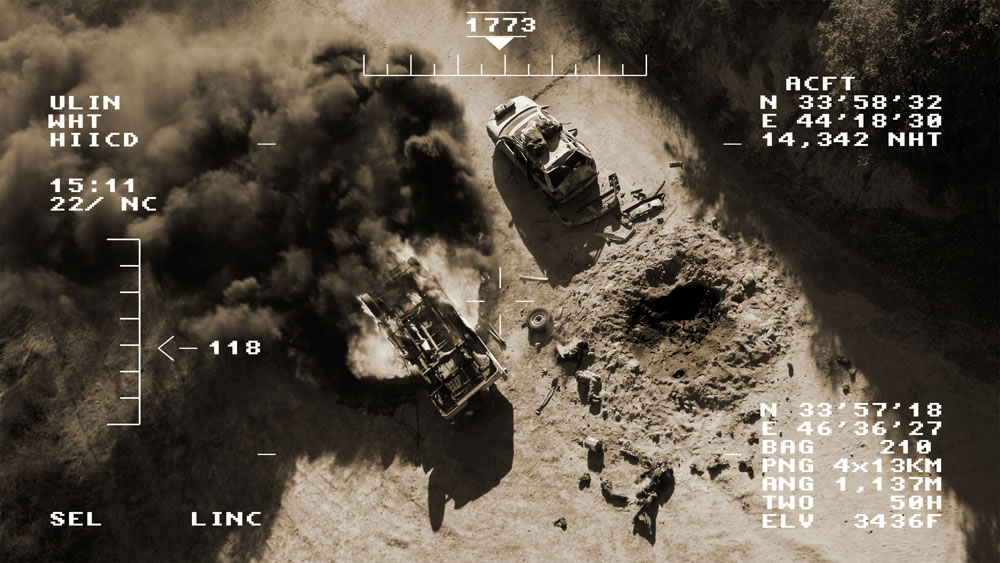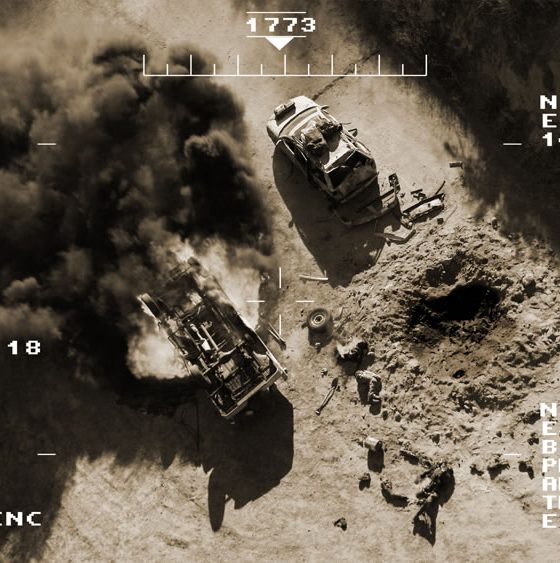

News
Google staff question involvement in Pentagon’s AI initiative
More than 4,000 employees at Google have signed a letter calling on the tech giant to stop participating in the Pentagon’s flagship artificial intelligence initiative — Project Maven — which is aimed at helping the military identify potential hostile targets from images captured by drones.
Project Maven, formally known as the Algorithmic Warfare Cross-Functional Team, was founded as a way to demonstrate how advanced technologies such as artificial intelligence and machine learning could help the US military in its operations. In a statement to WIRED, former deputy secretary of defense Bob Work, who established Project Maven in April 2017, stated that the initiative’s first mission was to come up with a more effective way to process images from drone video.
According to Work, the Pentagon’s analysis tools proved ineffective due to the massive amount of high-resolution images from the drones. The plan was to utilize machine learning that Google and other internet companies use to help the drones distinguish objects of interest such as people, buildings, and vehicles. According to Work, the target for the video processing tool’s rollout was December 2017 — a timeline that was easily met, and the technology has impressed ever since.
Back in December, the Department of Defense stated that algorithms from contractors were helping in the fight against ISIS. Earlier this month, Lt. Col. Garry Floyd noted that technology developed for Project Maven is currently being utilized in the military’s operations in the Middle East and Africa. William Carter, a deputy director from the Center for Strategic and International Studies, even stated that by “DoD standards,” the efficiency of AI-based military solutions were “literally a work of magic.”
The AI-based image processing system developed for Project Maven is capable of automatically annotating objects such as trucks, buildings, and boats on digital maps. The algorithms are also capable of being retrained by analysts, if the system makes a mistake during its operations.
Neither Google nor the Pentagon has declared the exact role that the tech giant played in the development of Project Maven’s technologies. Google did admit, however, that it helped the initiative by allowing the Pentagon to use its TensorFlow machine learning software to train algorithms on drone imagery analysis. Google noted, however, that the technology it provided was limited to non-offensive uses. In a statement to WIRED, Google’s AI director described the work done with the Pentagon as “mundane.” Despite this, the company’s participation in Project Maven still incited protests from several thousand Google employees.
Regardless of Google’s participation, or lack thereof, Project Maven is set to expand. The Pentagon is currently aiming to extend its AI-based image processing capabilities to larger, high-altitude drones. Project Maven is also attempting to apply AI in other military operations, such as the retrieval of potentially sensitive information from captured hard drives.
The Pentagon has expressed its openness to the use of AI in its field operations. Earlier this month, US secretary of defense Michael Griffin noted that the military would likely have self-driving vehicles before civilian companies such as Waymo or Tesla could roll out autonomous cars in America’s streets. The use of AI-enabled machines has also been on the rise, as evidenced by the number of intelligent battlefield robots deployed during a recent military exercise between the United States and Britain.
https://youtu.be/5UfF121mFiQ

News
Elon Musk’s Grokipedia surges to 5.6M articles, almost 79% of English Wikipedia
The explosive growth marks a major milestone for the AI-powered online encyclopedia, which was launched by Elon Musk’s xAI just months ago.

Elon Musk’s Grokipedia has grown to an impressive 5,615,201 articles as of today, closing in on 79% of the English Wikipedia’s current total of 7,119,376 articles.
The explosive growth marks a major milestone for the AI-powered online encyclopedia, which was launched by Elon Musk’s xAI just months ago. Needless to say, it would only be a matter of time before Grokipedia exceeds English Wikipedia in sheer volume.
Grokipedia’s rapid growth
xAI’s vision for Grokipedia emphasizes neutrality, while Grok’s reasoning capabilities allow for fast drafting and fact-checking. When Elon Musk announced the initiative in late September 2025, he noted that Grokipedia would be an improvement to Wikipedia because it would be designed to avoid bias.
At the time, Musk noted that Grokipedia “is a necessary step towards the xAI goal of understanding the Universe.”
Grokipedia was launched in late October, and while xAI was careful to list it only as Version 0.1 at the time, the online encyclopedia immediately earned praise. Wikipedia co-founder Larry Sanger highlighted the project’s innovative approach, noting how it leverages AI to fill knowledge gaps and enable rapid updates. Netizens also observed how Grokipedia tends to present articles in a more objective manner compared to Wikipedia, which is edited by humans.
Elon Musk’s ambitious plans
With 5,615,201 total articles, Grokipedia has now grown to almost 79% of English Wikipedia’s article base. This is incredibly quick, though Grokipedia remains text-only for now. xAI, for its part, has now updated the online encyclopedia’s iteration to v0.2.
Elon Musk has shared bold ideas for Grokipedia, including sending a record of the entire knowledge base to space as part of xAI’s mission to preserve and expand human understanding. At some point, Musk stated that Grokipedia will be renamed to Encyclopedia Galactica, and it will be sent to the cosmos.
“When Grokipedia is good enough (long way to go), we will change the name to Encyclopedia Galactica. It will be an open source distillation of all knowledge, including audio, images and video. Join xAI to help build the sci-fi version of the Library of Alexandria!” Musk wrote, adding in a later post that “Copies will be etched in stone and sent to the Moon, Mars and beyond. This time, it will not be lost.”
News
Tesla Model 3 becomes Netherlands’ best-selling used EV in 2025
More than one in ten second-hand electric cars sold in the country last year was a Tesla Model 3.

The Tesla Model 3 became the most popular used electric car in the Netherlands in 2025, cementing its dominance well beyond the country’s new-car market.
After years at the top of Dutch EV sales charts, the Model 3 now leads the country’s second-hand EV market by a wide margin, as record used-car purchases pushed electric vehicles further into the mainstream.
Model 3 takes a commanding lead
The Netherlands recorded more than 2.1 million used car sales last year, the highest level on record. Of those, roughly 4.8%, or about 102,000 vehicles, were electric. Within that growing segment, the Tesla Model 3 stood far ahead of its competitors.
In 2025 alone, 11,338 used Model 3s changed hands, giving the car an 11.1% share of the country’s entire used EV market. That means more than one in ten second-hand electric cars sold in the country last year was a Tesla Model 3, Auto Week Netherlands reported. The scale of its lead is striking: the gap between the Model 3 and the second-place finisher, the Volkswagen ID3, is more than 6,700 vehicles.
Rivals trail as residual values shape rankings
The Volkswagen ID.3 ranked a distant second, with 4,595 used units sold and a 4.5% market share. Close behind was the Audi e-tron, which placed third with 4,236 registrations. As noted by Auto Week Netherlands, relatively low residual values likely boosted the e-tron’s appeal in the used market, despite its higher original price.
Other strong performers included the Kia Niro, the Tesla Model Y, and the Hyundai Kona, highlighting continued demand for compact and midsize electric vehicles with proven range and reliability. No other model, however, came close to matching the Model 3’s scale or market presence.
News
Tesla Model Y Standard Long Range RWD launches in Europe
The update was announced by Tesla Europe & Middle East in a post on its official social media account on X.

Tesla has expanded the Model Y lineup in Europe with the introduction of the Standard Long Range RWD variant, which offers an impressive 657 km of WLTP range.
The update was announced by Tesla Europe & Middle East in a post on its official social media account on X.
Model Y Standard Long Range RWD Details
Tesla Europe & Middle East highlighted some of the Model Y Standard Long Range RWD’s most notable specs, from its 657 km of WLTP range to its 2,118 liters of cargo volume. More importantly, Tesla also noted that the newly released variant only consumes 12.7 kWh per 100 km, making it the most efficient Model Y to date.
The Model Y Standard provides a lower entry point for consumers who wish to enter the Tesla ecosystem at the lowest possible price. While the Model 3 Standard is still more affordable, some consumers might prefer the Model Y Standard due to its larger size and crossover form factor. The fact that the Model Y Standard is equipped with Tesla’s AI4 computer also makes it ready for FSD’s eventual rollout to the region.
Top Gear’s Model Y Standard review
Top Gear‘s recent review of the Tesla Model Y Standard highlighted some of the vehicle’s most notable features, such as its impressive real-world range, stellar infotainment system, and spacious interior. As per the publication, the Model Y Standard still retains a lot of what makes Tesla’s vehicles well-rounded, even if it’s been equipped with a simplified interior.
Top Gear compared the Model Y Standard to its rivals in the same segment. “The introduction of the Standard trim brings the Model Y in line with the entry price of most of its closest competition. In fact, it’s actually cheaper than a Peugeot e-3008 and costs £5k less than an entry-level Audi Q4 e-tron. It also makes the Ford Mustang Mach-E look a little short with its higher entry price and worse range,” the publication wrote.








